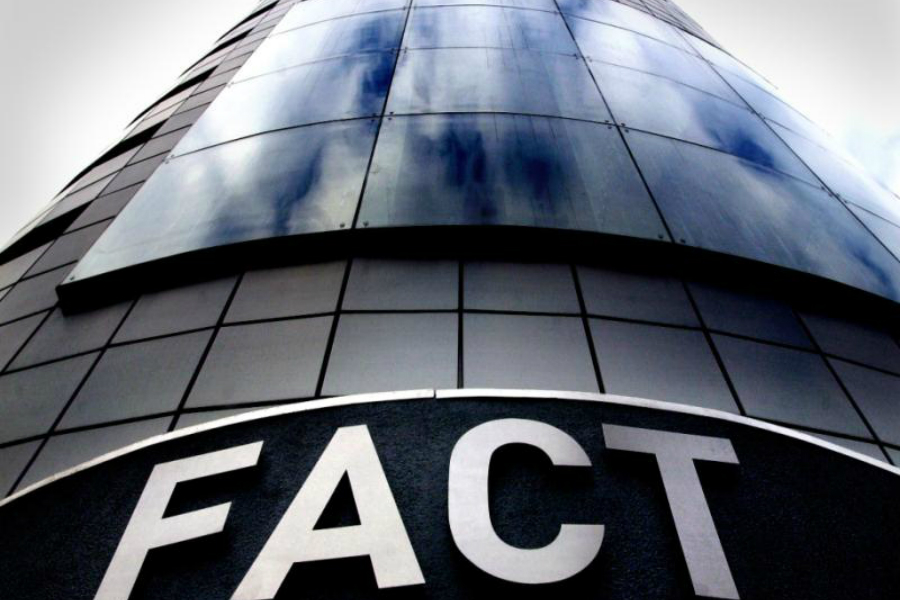What FACT’s Staff Restructure Says About Working In The Arts

All arts venues have to be more flexible to survive. But at what cost?
There has been a lot of discussion lately about FACT’s staffing restructure. According to local media and an eloquent open letter from the Precarious Workers Brigade, the arts charity have been unethical in pushing an agenda of zero hour contracts and replacing front of house staff with volunteers. According to FACT, most staff are still employed with the organisation, have been treated fairly, and a fresh approach was vital to the centre’s future (see full response here). So who’s right? And what does this mean regarding jobs in the arts more widely?
FACT’s previous FoH structure included nine ‘casual hours’ staff (on zero hour contracts, working during gallery opening hours and during events), three part time staff, and one full time member of staff. 21 volunteers were recruited last year. The new structure – that according to management is putting “talent development at the heart of the organisation” – has 71 volunteers, three full-time staff (with two new positions recruited from the previous three part time roles), six casual staff and no part-time roles.
From the previous team, one remained in the same post, two took up full time posts in FoH, three work in new roles within FACT or Picturehouse Cinema, and six still work on events (on zero hour contracts). One member of staff took voluntary redundancy. In total, a loss of 60 hours per week within the part time and casual pool. Not a huge job loss as reported, but still enough to significantly change the way people work at FACT’s front of house.
Speaking to five of the staff affected (all wishing to remain anonymous), the overall reaction was one of worry and disappointment at reduced casual hours and at the shake-up in general, commenting that it been a “great place to work”. The biggest grievance, it seems, was the way that the organisation handled the changes and communication; specifically FACT’s aim of providing more support for emerging artistic talent. Most gallery staff are also artists who have been helping to run FACT for a long time; their wages supplemented an artistic practice in the city, including freelance photography, visual arts and curating.
“The front of house team were not involved in any reviews or restructures to offer input, suggestions or alternatives,” said one. “Staff development has always been poor; why not offer previously employed staff the opportunity to develop their skills (like current volunteers do now)?”
Speaking to Executive Director Iona Horsburgh, the restructure was a difficult decision made in reaction to supply and demand, and making the gallery function more efficiently for staff, volunteers and visitors. “We completely understand that some of the staff affected are upset and emotional about the changes. We undertook a full consultation process including individual meetings, group meetings and invited feedback. Since the decision was finally reached in February we have worked hard to ensure that on a personal level that this impacted them as little as possible.
“As an arts organisation we have a very important role in developing talent and skills and we have a phenomenal success rate in developing staff who want to pursue a career in the arts. Over 40% of our current employees began their roles as either FoH staff or volunteers at FACT; truly a unique achievement, and that dedication to staff development is core to the way our organisation operates.
“These FoH changes were driven by the same ethos. We knew that we needed to restructure the department and that there was a huge demand to provide more volunteering opportunities supported by a really good training programme, so we focused our resources on building a team that could deliver this new model.
“We researched a lot of different volunteer programmes and came across so many poor schemes in the sector, particularly ones where people were expected to do minimum hours. That wasn’t a scheme we wanted to replicate here.”
Implementing a system that provides training every Monday for volunteers and staff — on topics ranging from events management, programming, marketing and business planning – may be a progressive way to nurture young producers, and will indeed offer much-needed career development for some, if not all.
However, it also unearths wider and complex issues about surviving in the arts. What will people who want to work in the arts sector be doing in the future to secure paid work? And will that work ever be permanent?
One of those issues is that artists simply aren’t being paid enough, and often have to hold down two or three jobs in order to secure a living wage. The Scotsman reported last month that three in four artists earn less than £5,000 a year. Many work at cultural organisations like FACT as freelancers for one-off creative projects (we’re one of them). Many others undertake zero-hour contracts, a system widely utilised in the industry as a way to manage irregular events and seasonal attendance, but often resulting in an unreliable income for staff. Recent government data reveals that 1.4 million of us are on zero-hour contracts with no guaranteed minimum hours or pay.
A second major issue is that there simply aren’t enough arts jobs to go around. Recently, National Museums Liverpool – who run a range of traditional museums and galleries across Merseyside that offer free entry and events — announced that further jobs were to be axed (one in five posts have already been cut since 2010). Getting a foot on the ladder if you aspire towards a role as a curator, programmer, artist — or indeed an arts administrator, technician, manager, front of house or any other core operational role that make our cultural institutions tick — is currently worryingly difficult across the UK.
So does this mean that our cultural institutions need to think again, and maybe start operating differently? Clare Connor, Director of Stratford Circus, and Gavin Barlow, CEO of the Albany, recently wrote an article for The Guardian about arts centres holding the key to the UK culture’s future. “Art centres are often busy from early morning to late at night, offering an extensive range of services and platforms for engagement, attracting audiences the sector usually finds hard to reach.” They have a more varied approach in “providing access to artists, consultancy, networks and training”, in addition to being more imaginative in gaining revenue that doesn’t solely rely on government funding.
Barlow said to us:
“Times are clearly tough for a lot of arts organisations. Arts centres have traditionally had a lot of support from local authorities and so many have been hit hard by funding cuts. The successful ones have proved very adaptable and resilient, taking advantage of the flexibility of their business models and renegotiating their relationship with local authorities where they can. At the Albany for example, we have used our expertise in running cultural buildings to bid for local authority contracts, and are now running two new library buildings.
“Like most arts centres, we were already running a social enterprise model, so were used to diversifying income streams. Looking forward, I think one of the major issues is how we support the next generation of leaders and how arts centres can support each other, sharing expertise and creating more opportunities for emerging artists and producers by working together. It’s for that reason we helped set up the National Partnership of Arts Centres last year, and are aiming to launch a wider network next week – Future Arts Centres.”
If this more adaptable approach does hold the key to our future, then arts centres have a vital, civic responsibility to both pursue more sustainable business models and provide more opportunities for people who want to work within them. “It can be hard to handle… One of the things we’re there for is to help the organisation to understand what the bigger picture is,” says Arts Council Director (Combined Arts and North) Alison Clark Jenkins, who works with a huge variety of cultural organisations including art galleries and music festivals.
When asked about the future of entry-level roles and the lack of part-time and full-time jobs in the arts, she confirmed that staffing structures have changed drastically and will certainly remain so.
“It’s a really massive challenge. The economy is an issue, but also looking at how arts organisations need to be more flexible. I can’t see us returning to the staffing structures of, say, ten years ago… It’s about balancing the needs of the organisation, the sector and the ability for people to be able to make a living.”
What about volunteering? Volunteers are in more demand than ever — at FAC T and NML yes, but also at arts festivals like Liverpool Biennial. Is controlled volunteering still a good thing, or is it now a contentious issue? Are we heading towards a culture where volunteers are replacing paid workers, despite official advice from Volunteering England and the TUC?
“The point of a volunteer is it doesn’t actually cover a job that would usually be done by a paid worker,” continues Clark Jenkins. “It should be offering something different, and can give the volunteer the work experience or route into the arts that they wouldn’t get any other way, but also it’s about giving something back. Volunteering is often is a key part of how arts organisations achieve their aims, and as long as it’s managed well, not underpinning the whole organisation, and the people involved get a rich experience.”
And that’s the key point here; volunteering should never become the foundation of an entire organisation, just as zero hours contracts shouldn’t. A successful organisation has happy, secure staff at its core, in a variety of appreciated roles. In the midst of a nationwide drive to widen access and improve participation in the arts, volunteering is still a vital component, as well as supporting our arts venues to keep running and offering the services we expect. We just need to be careful that we don’t get drawn into a culture where arts jobs, when they come up, only go to those that can afford to undertake a substantial amount of unpaid work. That there is and continues to be a support system in the arts for the people who wish to work there.
It’s undeniable that art sector workers are taking a hit. Ultimately, organisations face difficult choices in how to best negotiate this prolonged period of financial pressure in a way that doesn’t unduly impinge on the opportunities and livelihoods of the next generation of arts staff.
Laura Robertson
More on how FACT Liverpool work with individuals and groups here
Follow the ongoing discussion with the Precarious Workers Brigade here





